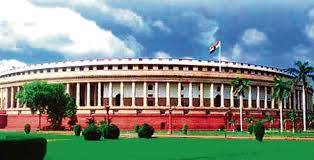The Parliamentary Standing Committee on Personnel, Public Grievances, Law and Justice has expressed its concern over the less number of women and candidates belonging to the marginalised sections of the society being appointed in the higher judiciary. Parliamentary Committee bats for increased representation of women, marginalised sections in higher judiciary
Releasing its 133rd report on ‘Judicial Process and their Reforms,’ the Committee said the data provided by the Union government on the social status of High Court Judges disclosed that the judiciary suffered from a ‘diversity deficit’.
It suggested the Supreme Court Collegium as well as Collegiums of different High Courts to ensure that while making recommendations for appointments to the Higher Judiciary, they proposed more names of women and those belonging to the marginalised sections of the society, including minorities.
The report said this provision should be clearly mentioned in the Memoranda of Procedure (MoP), which was presently under finalisation.
The Committee noted that the representation of SCs, STs, OBCs, women and minorities in the higher judiciary was far below the desired levels and did not reflect the social diversity of the country.
It said in the recent years, there has been a declining trend in the representation from all the marginalised sections of Indian society.
The report revealed that only three percent SC, 1.5 percent ST, 12 percent OBC, five percent minority and 15 percent women judges have been appointed in High Courts since 2018. The data regarding 2.16 percent judges was not available.
In 2023, out of 61 judges appointed to various High Courts across the country, only three were appointed from the SC community, two belonged to the ST and 15 were from OBCs. Besides, nine out of the 61 appointees were women, while four judges belonged to the minority community.
Noting that there was no provision for reservation in judicial appointments at the Supreme Court and High Courts level, the Committee stated that adequate representation of various sections of Indian society will further strengthen the trust, credibility and acceptability of the Judiciary among the citizens.
It referred to the Advocates-on-Record Association vs Union of India case, wherein the Apex Court had said that along with other factors such as proper representation of all sections of the people from all parts of the country, legitimate expectation of the suitable and equally meritorious Judges to be considered in their turn was a relevant factor for due consideration while making the choice of the most suitable and meritorious amongst them, the outweighing consideration being merit, to select the best available for the Apex Court.
The report said the need for ensuring adequate representation has also been acknowledged by the Supreme Court Collegium.
It said while sending their comments on the draft MoP vide CJI’s letter in March, 2017, the Supreme Court Collegium had agreed to ‘merit and integrity’ being the prime criteria for appointment of a judge in the High Court.
The Collegium had suggested an increase in the representation of women and marginalised sections of society. However, it said that in case of judicial officers, due weightage should also be given to their inter-se seniority.
The Committee said that as of now, the data related to the social status of High Court judges was available from 2018 onwards. It suggested the Department of Justice to find ways and means to collect such data in respect of all judges presently serving in the Supreme Court and High Courts.
If required, necessary amendments may be brought in the respective Acts/service rules of the judges for the purpose, added the Committee.


